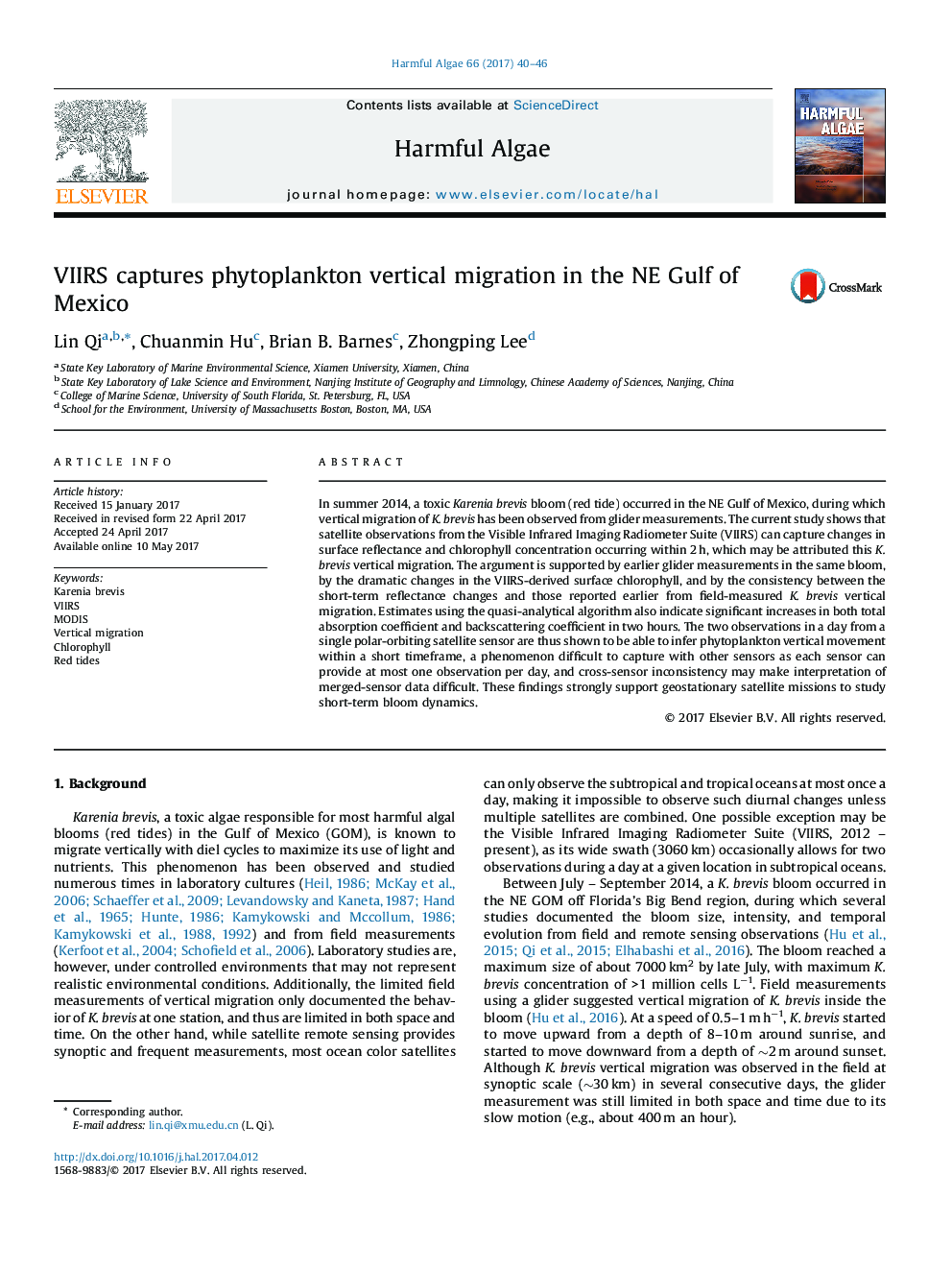| Article ID | Journal | Published Year | Pages | File Type |
|---|---|---|---|---|
| 5765781 | Harmful Algae | 2017 | 7 Pages |
In summer 2014, a toxic Karenia brevis bloom (red tide) occurred in the NE Gulf of Mexico, during which vertical migration of K. brevis has been observed from glider measurements. The current study shows that satellite observations from the Visible Infrared Imaging Radiometer Suite (VIIRS) can capture changes in surface reflectance and chlorophyll concentration occurring within 2Â h, which may be attributed this K. brevis vertical migration. The argument is supported by earlier glider measurements in the same bloom, by the dramatic changes in the VIIRS-derived surface chlorophyll, and by the consistency between the short-term reflectance changes and those reported earlier from field-measured K. brevis vertical migration. Estimates using the quasi-analytical algorithm also indicate significant increases in both total absorption coefficient and backscattering coefficient in two hours. The two observations in a day from a single polar-orbiting satellite sensor are thus shown to be able to infer phytoplankton vertical movement within a short timeframe, a phenomenon difficult to capture with other sensors as each sensor can provide at most one observation per day, and cross-sensor inconsistency may make interpretation of merged-sensor data difficult. These findings strongly support geostationary satellite missions to study short-term bloom dynamics.
